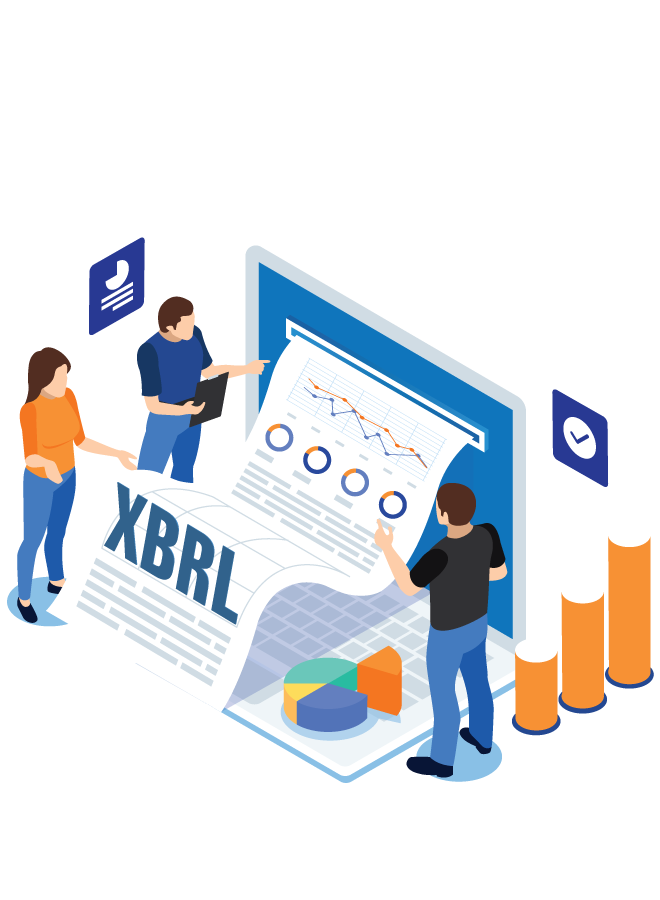
XBRL is an open standard for financial data exchange and company reporting. It facilitates the conveying of financial data and aids in bringing consistency and standards to the communication and presentation of that data. It is the language of choice for electronic data transmission worldwide. In other words, it merely modifies how financial information is reported but does not affect the content itself. Below is everything you need to know about XBRL in financial reporting and how it works.
What is XBRL?
XBRL is the short form of “eXtensible Business Coverage Language.” The purpose of utilizing a unique format is to facilitate the easy transmission and systematic accessibility of financial data. ACRA (Accounting and Corporate Corporate Authority) receives financial data filed in Singapore using XBRL, creating a database. Software programs mark the provided financial data with relevant XBRL tags from a taxonomy to enable XBRL conversion.
Anybody can access and analyze this extremely rich source to forecast trends. Auditors, regulators, financial analysts, and organizations involved in the financial sector have access to the financial database. These specialists use the data to research market dynamics and calculate economic changes.
XBRL documentation assists ACRA in providing the experts with access to valuable information. It also assists authorities in formulating a suitable response to market developments by implementing changes to the regulatory framework. It improves openness and sends automated financial data promptly.
How do you use XBRL?
Using the appropriate XBRL tags to fill up the relevant business disclosures is the foundation of XBRL reporting. This is how XBRL conversion services work:
First, a regulatory body publishes an XBRL taxonomy outlining the range of data organizations must provide, together with an XBRL reporting requirement. The entities who abide by ACRA’s XBRL standard must comprehend it and give the regulator the necessary data in XBRL format.
The business can collaborate with an XBRL software or service vendor to translate financial data into the required format. Consequently, the regulatory body sets up the necessary infrastructure to gather the XBRL reports the regulated companies submit.
When producing XBRL reports, businesses must focus on three essential tasks: applying XBRL tags, creating extensions, and validating an XBRL form. We explain them below:
Tagging
Applying XBRL tags to the key information points in a financial form through software is known as tagging. XBRL report generation software users can examine their documents, compare them with XBRL taxonomy, and link their disclosures to the relevant taxonomy concepts. Before beginning the tagging process, users should comprehend the reference XBRL taxonomy. For this reason, the best software and service providers, like Boardroom, offer XBRL professional support during the reporting process.
Forming extensions
Businesses can describe disclosures without an appropriate concept in the XBRL reference taxonomy by creating bespoke XBRL elements or extensions. This is because some disclosures unique to a corporation may not have an available tag in the XBRL reference structure. It’s important to remember that businesses can only create extensions while utilizing an open XBRL taxonomy. On the other hand, a closed XBRL structure does not allow for expandable items since it only allows for template-based reporting.
Validation
The procedure by which users can confirm the accuracy and technical hygienics of the financial data they are sharing is known as validation. They can test their documents using a variety of free validation tools. Additionally, some software programs come with built-in validation tools. The validation procedure guarantees error-free passage of XBRL documents through the regulator’s report collection platform.
What benefits does XBRL offer?
Accessibility, comparability, and transparency are XBRL’s key benefits.
Accessibility
An XBRL report is in a digital format, making it simpler to send between computer terminals. Furthermore, one may effortlessly extract the machine-readable data from an XBRL/iXBRL report and analyze it in a spreadsheet. This improves the information in XBRL being accessible.
Comparability
Comparability is the ability to instantly compare financial reports from companies that file their data in XBRL. With XBRL formats, users can more easily obtain and compare XBRL information, unlike data locked up in PDFs or other static documents.
Transparency
Since each data point is digitally captured and tagged with an XBRL tag, XBRL reporting dramatically increases the transparency of both financial and non-financial disclosures.
Who benefits from XBRL reports?
Regulators, investors, analysts, banks, credit rating agencies, and reporting-filing companies greatly benefit from XBRL reports. These are the ways that XBRL reports help each of them.
- Financial analysts and investors: The XBRL data format facilitates easier access to, analysis of, and comparison of financial data for investors and analysts, hence expediting the decision-making process.
- Regulators: Because digital regulatory filings are so open, central banks, insurance regulators, and market regulators all need XBRL reporting. This facilitates the regulators’ ability to monitor the organizations under their authority.
- Banks: Some large banks have been known to review companies’ XBRL reports before making loan approvals.
- Credit rating agencies: XBRL data filing makes it simpler for these agencies to analyze businesses and the debt instruments they hold.
What is the relevance of XBRL in accounting
Accounting records and reports financial data to improve transparency and help with business decisions. XBRL is one type of financial reporting language. It transforms that data into a digital form to make it easier to access, analyze, and compare.
Accountants must understand the accounting rules that are relevant to their region. An XBRL taxonomy is an electronic rendition of accounting standards. Accountants need to familiarize themselves with the XBRL format and understand how to utilize it for financial reporting, as most international authorities have started requesting financial data in this format. Companies can also outsource XBRL conversion services to ensure efficiency and accuracy and save resources.
Summing up
An XBRL form is a digital document that contains business or financial data. Most Singapore businesses contract experienced service providers to handle their XBRL reporting or regulatory compliance. Financial analysts, company stakeholders, and investors prefer XBRL files over PDFs because digital data is immediately accessible and ready for use.
